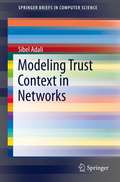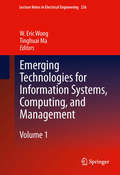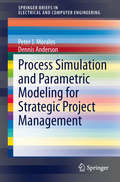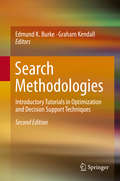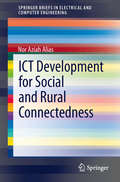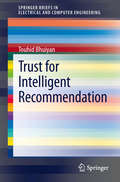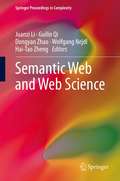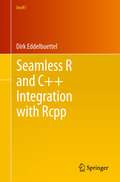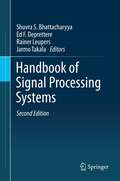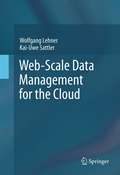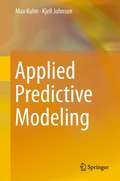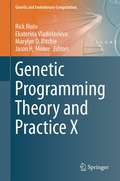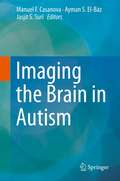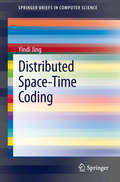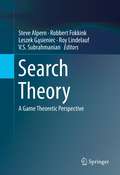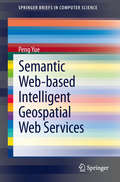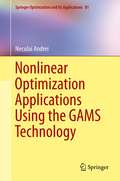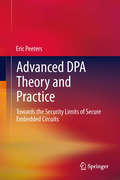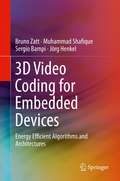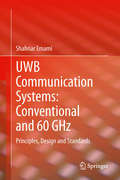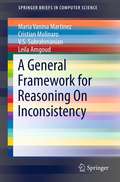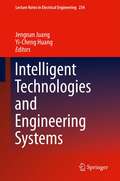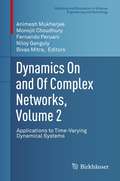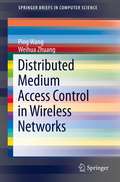- Table View
- List View
Modeling Trust Context in Networks
by Sibel AdaliWe make complex decisions every day, requiring trust in many different entities for different reasons. These decisions are not made by combining many isolated trust evaluations. Many interlocking factors play a role, each dynamically impacting the others. In this brief, "trust context" is defined as the system level description of how the trust evaluation process unfolds. Networks today are part of almost all human activity, supporting and shaping it. Applications increasingly incorporate new interdependencies and new trust contexts. Social networks connect people and organizations throughout the globe in cooperative and competitive activities. Information is created and consumed at a global scale. Systems, devices, and sensors create and process data, manage physical systems, and participate in interactions with other entities, people and systems alike. To study trust in such applications, we need a multi-disciplinary approach. This book reviews the components of the trust context through a broad review of recent literature in many different fields of study. Common threads relevant to the trust context across many application domains are also illustrated.
Emerging Technologies for Information Systems, Computing, and Management
by Tinghuai Ma W. Eric WongThis book aims to examine innovation in the fields of information technology, software engineering, industrial engineering, management engineering. Topics covered in this publication include; Information System Security, Privacy, Quality Assurance, High-Performance Computing and Information System Management and Integration. The book presents papers from The Second International Conference for Emerging Technologies Information Systems, Computing, and Management (ICM2012) which was held on December 1 to 2, 2012 in Hangzhou, China.
Process Simulation and Parametric Modeling for Strategic Project Management
by Dennis Anderson Peter J. MoralesProcess Simulation and Parametric Modeling for Strategic Project Management will offer CIOs, CTOs and Software Development Managers, IT Graduate Students an introduction to a set of technologies that will help them understand how to better plan software development projects, manage risk and have better insight into the complexities of the software development process. A novel methodology will be introduced that allows a software development manager to better plan and access risks in the early planning of a project. By providing a better model for early software development estimation and software development, managers will be better equipped to make more effective project portfolio investment choices. Moreover, the methodology will allow the software development manager to continually simulate scenarios throughout the lifecycle of the project and determine plausible alternatives before the risk becomes a reality.
Search Methodologies
by Edmund K. Burke Graham KendallThe first edition of Search Methodologies: Introductory Tutorials in Optimization and Decision Support Techniques was originally put together to offer a basic introduction to the various search and optimization techniques that students might need to use during their research, and this new edition continues this tradition. Search Methodologies has been expanded and brought completely up to date, including new chapters covering scatter search, GRASP, and very large neighborhood search. The chapter authors are drawn from across Computer Science and Operations Research and include some of the world's leading authorities in their field. The book provides useful guidelines for implementing the methods and frameworks described and offers valuable tutorials to students and researchers in the field. "As I embarked on the pleasant journey of reading through the chapters of this book, I became convinced that this is one of the best sources of introductory material on the search methodologies topic to be found. The book's subtitle, "Introductory Tutorials in Optimization and Decision Support Techniques", aptly describes its aim, and the editors and contributors to this volume have achieved this aim with remarkable success. The chapters in this book are exemplary in giving useful guidelines for implementing the methods and frameworks described. " Fred Glover, Leeds School of Business, University of Colorado Boulder, USA "[The book] aims to present a series of well written tutorials by the leading experts in their fields. Moreover, it does this by covering practically the whole possible range of topics in the discipline. It enables students and practitioners to study and appreciate the beauty and the power of some of the computational search techniques that are able to effectively navigate through search spaces that are sometimes inconceivably large. I am convinced that this second edition will build on the success of the first edition and that it will prove to be just as popular. " Jacek Blazewicz, Institute of Computing Science, Poznan University of Technology and Institute of Bioorganic Chemistry, Polish Academy of Sciences
ICT Development for Social and Rural Connectedness
by Nor Aziah AliasICT Development for Social and Rural Connectedness provides an introduction to the concept of 'connectedness', and explores how this socio-psychological term has evolved during the age of the Internet. The book surveys the principles of ICT for development (ICTD), and closely examines how ICT has played a pivotal role in the rural community development of various countries. To highlight the continued benefits of ICT in these regions, the book presents an in-depth case study that analyzes the connectedness within the rural internet centers of Malaysia. The book is intended primarily for researchers and practitioners as a reference guide to ICTD in rural environments.
Trust for Intelligent Recommendation
by Touhid BhuiyanRecommender systems are one of the recent inventions to deal with the ever-growing information overload in relation to the selection of goods and services in a global economy. Collaborative Filtering (CF) is one of the most popular techniques in recommender systems. The CF recommends items to a target user based on the preferences of a set of similar users known as the neighbors, generated from a database made up of the preferences of past users. In the absence of these ratings, trust between the users could be used to choose the neighbor for recommendation making. Better recommendations can be achieved using an inferred trust network which mimics the real world "friend of a friend" recommendations. To extend the boundaries of the neighbor, an effective trust inference technique is required. This book proposes a trust interference technique called Directed Series Parallel Graph (DSPG) that has empirically outperformed other popular trust inference algorithms, such as TidalTrust and MoleTrust. For times when reliable explicit trust data is not available, this book outlines a new method called SimTrust for developing trust networks based on a user's interest similarity. To identify the interest similarity, a user's personalized tagging information is used. However, particular emphasis is given in what resources the user chooses to tag, rather than the text of the tag applied. The commonalities of the resources being tagged by the users can be used to form the neighbors used in the automated recommender system. Through a series of case studies and empirical results, this book highlights the effectiveness of this tag-similarity based method over the traditional collaborative filtering approach, which typically uses rating data. Trust for Intelligent Recommendation is intended for practitioners as a reference guide for developing improved, trust-based recommender systems. Researchers in a related field will also find this book valuable.
Semantic Web and Web Science
by Wolfgang Nejdl Dongyan Zhao Guilin Qi Hai-Tao Zheng Juanzi LiThe book will focus on exploiting state of the art research in semantic web and web science. The rapidly evolving world-wide-web has led to revolutionary changes in the whole of society. The research and development of the semantic web covers a number of global standards of the web and cutting edge technologies, such as: linked data, social semantic web, semantic web search, smart data integration, semantic web mining and web scale computing. These proceedings are from the 6th Chinese Semantics Web Symposium.
Seamless R and C++ Integration with Rcpp
by Dirk EddelbuettelRcpp is the glue that binds the power and versatility of R with the speed and efficiency of C++. With Rcpp, the transfer of data between R and C++ is nearly seamless, and high-performance statistical computing is finally accessible to most R users. Rcpp should be part of every statistician's toolbox. -- Michael Braun, MIT Sloan School of Management "Seamless R and C++ integration with Rcpp" is simply a wonderful book. For anyone who uses C/C++ and R, it is an indispensable resource. The writing is outstanding. A huge bonus is the section on applications. This section covers the matrix packages Armadillo and Eigen and the GNU Scientific Library as well as RInside which enables you to use R inside C++. These applications are what most of us need to know to really do scientific programming with R and C++. I love this book. -- Robert McCulloch, University of Chicago Booth School of Business Rcpp is now considered an essential package for anybody doing serious computational research using R. Dirk's book is an excellent companion and takes the reader from a gentle introduction to more advanced applications via numerous examples and efficiency enhancing gems. The book is packed with all you might have ever wanted to know about Rcpp, its cousins (RcppArmadillo, RcppEigen .etc.), modules, package development and sugar. Overall, this book is a must-have on your shelf. -- Sanjog Misra, UCLA Anderson School of Management The Rcpp package represents a major leap forward for scientific computations with R. With very few lines of C++ code, one has R's data structures readily at hand for further computations in C++. Hence, high-level numerical programming can be made in C++ almost as easily as in R, but often with a substantial speed gain. Dirk is a crucial person in these developments, and his book takes the reader from the first fragile steps on to using the full Rcpp machinery. A very recommended book! -- Søren Højsgaard, Department of Mathematical Sciences, Aalborg University, Denmark "Seamless R and C ++ Integration with Rcpp" provides the first comprehensive introduction to Rcpp. Rcpp has become the most widely-used language extension for R, and is deployed by over one-hundred different CRAN and BioConductor packages. Rcpp permits users to pass scalars, vectors, matrices, list or entire R objects back and forth between R and C++ with ease. This brings the depth of the R analysis framework together with the power, speed, and efficiency of C++. Dirk Eddelbuettel has been a contributor to CRAN for over a decade and maintains around twenty packages. He is the Debian/Ubuntu maintainer for R and other quantitative software, edits the CRAN Task Views for Finance and High-Performance Computing, is a co-founder of the annual R/Finance conference, and an editor of the Journal of Statistical Software. He holds a Ph.D. in Mathematical Economics from EHESS (Paris), and works in Chicago as a Senior Quantitative Analyst.
Handbook of Signal Processing Systems
by Ed F. Deprettere Jarmo Takala Rainer Leupers Shuvra S. BhattacharyyaHandbook of Signal Processing Systems is organized in three parts. The first part motivates representative applications that drive and apply state-of-the art methods for design and implementation of signal processing systems; the second part discusses architectures for implementing these applications; the third part focuses on compilers and simulation tools, describes models of computation and their associated design tools and methodologies. This handbook is an essential tool for professionals in many fields and researchers of all levels.
Web-Scale Data Management for the Cloud
by Wolfgang Lehner Kai-Uwe SattlerThe efficient management of a consistent and integrated database is a central task in modern IT and highly relevant for science and industry. Hardly any critical enterprise solution comes without any functionality for managing data in its different forms. Web-Scale Data Management for the Cloud addresses fundamental challenges posed by the need and desire to provide database functionality in the context of the Database as a Service (DBaaS) paradigm for database outsourcing. This book also discusses the motivation of the new paradigm of cloud computing, and its impact to data outsourcing and service-oriented computing in data-intensive applications. Techniques with respect to the support in the current cloud environments, major challenges, and future trends are covered in the last section of this book. A survey addressing the techniques and special requirements for building database services are provided in this book as well.
Applied Predictive Modeling
by Max Kuhn Kjell JohnsonThis text is intended for a broad audience as both an introduction to predictive models as well as a guide to applying them. Non-mathematical readers will appreciate the intuitive explanations of the techniques while an emphasis on problem-solving with real data across a wide variety of applications will aid practitioners who wish to extend their expertise. Readers should have knowledge of basic statistical ideas, such as correlation and linear regression analysis. While the text is biased against complex equations, a mathematical background is needed for advanced topics. Dr. Kuhn is a Director of Non-Clinical Statistics at Pfizer Global R&D in Groton Connecticut. He has been applying predictive models in the pharmaceutical and diagnostic industries for over 15 years and is the author of a number of R packages. Dr. Johnson has more than a decade of statistical consulting and predictive modeling experience in pharmaceutical research and development. He is a co-founder of Arbor Analytics, a firm specializing in predictive modeling and is a former Director of Statistics at Pfizer Global R&D. His scholarly work centers on the application and development of statistical methodology and learning algorithms.
Genetic Programming Theory and Practice X
by Ekaterina Vladislavleva Marylyn D Ritchie Jason H. Moore Rick RioloThese contributions, written by the foremost international researchers and practitioners of Genetic Programming (GP), explore the synergy between theoretical and empirical results on real-world problems, producing a comprehensive view of the state of the art in GP. Topics in this volume include: evolutionary constraints, relaxation of selection mechanisms, diversity preservation strategies, flexing fitness evaluation, evolution in dynamic environments, multi-objective and multi-modal selection, foundations of evolvability, evolvable and adaptive evolutionary operators, foundation of injecting expert knowledge in evolutionary search, analysis of problem difficulty and required GP algorithm complexity, foundations in running GP on the cloud - communication, cooperation, flexible implementation, and ensemble methods. Additional focal points for GP symbolic regression are: (1) The need to guarantee convergence to solutions in the function discovery mode; (2) Issues on model validation; (3) The need for model analysis workflows for insight generation based on generated GP solutions - model exploration, visualization, variable selection, dimensionality analysis; (4) Issues in combining different types of data. Readers will discover large-scale, real-world applications of GP to a variety of problem domains via in-depth presentations of the latest and most significant results.
Imaging the Brain in Autism
by Jasjit S. Suri Ayman S. El-Baz Manuel F. CasanovaData compiled by the Center for Disease Control and Prevention indicates an alarming and continuing increase in the prevalence of autism. Despite intensive research during the last few decades, autism remains a behavioral defined syndrome wherein diagnostic criteria lack in construct validity. And, contrary to other conditions like diabetes and hypertension, there are no biomarkers for autism. However, new imaging methods are changing the way we think about autism, bringing us closer to a falsifiable definition for the condition, identifying affected individuals earlier in life, and recognizing different subtypes of autism. The imaging modalities discussed in this book emphasize the power of new technology to uncover important clues about the condition with the hope of developing effective interventions. Imaging the Brain in Autism was created to examine autism from a unique perspective that would emphasize results from different imaging technologies. These techniques show brain abnormalities in a significant percentage of patients, abnormalities that translate into aberrant functioning and significant clinical symptomatology. It is our hope that this newfound understanding will make the field work collaborative and provide a path that minimizes technical impediments.
Distributed Space-Time Coding
by Yindi JingDistributed Space-Time Coding (DSTC) is a cooperative relaying scheme that enables high reliability in wireless networks. This brief presents the basic concept of DSTC, its achievable performance, generalizations, code design, and differential use. Recent results on training design and channel estimation for DSTC and the performance of training-based DSTC are also discussed.
Search Theory
by Leszek Gąsieniec V. S. Subrahmanian Steve Alpern Roy Lindelauf Robbert FokkinkSearch games and rendezvous problems have received growing attention in computer science within the past few years. Rendezvous problems emerge naturally, for instance, to optimize performance and convergence of mobile robots. This gives a new algorithmic point of view to the theory. Furthermore, modern topics such as the spreading of gossip or disease in social networks have lead to new challenging problems in search and rendezvous. Search Theory: A Game Theoretic Perspective introduces the first integrated approach to Search and Rendezvous from the perspectives of biologists, computer scientists and mathematicians. This contributed volume covers a wide range of topics including rendezvous problems and solutions, rendezvous on graphs, search games on biology, mobility in governed social networks, search and security, and more. Most chapters also include case studies or a survey, in addition to a chapter on the future direction of Search and Rendezvous research. This book targets researchers and practitioners working in computer science, mathematics and biology as a reference book. Advanced level students focused on these fields will also find this book valuable as a secondary text book or reference.
Semantic Web-based Intelligent Geospatial Web Services
by Peng YueBy introducing Semantic Web technologies into geospatial Web services, this book addresses the semantic description of geospatial data and standards-based Web services, discovery of geospatial data and services, and generation of composite services. Semantic descriptions for geospatial data, services, and geoprocessing service chains are structured, organized, and registered in geospatial catalogue services. The ontology-based approach helps to improve the recall and precision of data and services discovery. Semantics-enabled metadata tracking and satisfaction allows analysts to focus on the generation of a geospatial process model rather than spending large amounts of time in data preparation. "DataType"-driven service composition and path planning can help to automate a range of knowledge discovery processes in a limited geospatial domain. Process planning facilitates the construction of complex services and models for geocomputation. A three-phase procedure to cover the lifecycle of service chaining and to identify the roles of the methods involved is proposed. It includes process modeling, process model instantiation, and workflow execution. The approach is implemented in a prototype system with use cases to demonstrate applicability. The objective of the research is to develop the key technologies for an intelligent geospatial knowledge system based on Web services to automate the data discovery and data preprocessing steps in the distributed Web service environment, to automate a range of knowledge discovery processes in a limited geospatial domain, using the automated construction and execution of service chains, and to facilitate the construction of complex services and models for geocomputation.
Nonlinear Optimization Applications Using the GAMS Technology
by Neculai AndreiHere is a collection of nonlinear optimization applications from the real world, expressed in the General Algebraic Modeling System (GAMS). The concepts are presented so that the reader can quickly modify and update them to represent real-world situations.
Advanced DPA Theory and Practice: Towards the Security Limits of Secure Embedded Circuits
by Eric PeetersAdvanced DPA Theory and Practice provides a thorough survey of new physical leakages of embedded systems, namely the power and the electromagnetic emanations. The book presents a thorough analysis about leakage origin of embedded system. This book examines the systematic approach of the different aspects and advanced details about experimental setup for electromagnetic attack. The author discusses advanced statistical methods to successfully attack embedded devices such as high-order attack, template attack in principal subspaces, machine learning methods. The book includes theoretical framework to define side-channel based on two metrics: mutual information and success rate.
3D Video Coding for Embedded Devices: Energy Efficient Algorithms and Architectures
by Jörg Henkel Muhammad Shafique Sergio Bampi Bruno ZattThis book shows readers how to develop energy-efficient algorithms and hardware architectures to enable high-definition 3D video coding on resource-constrained embedded devices. Users of the Multiview Video Coding (MVC) standard face the challenge of exploiting its 3D video-specific coding tools for increasing compression efficiency at the cost of increasing computational complexity and, consequently, the energy consumption. This book enables readers to reduce the multiview video coding energy consumption through jointly considering the algorithmic and architectural levels. Coverage includes an introduction to 3D videos and an extensive discussion of the current state-of-the-art of 3D video coding, as well as energy-efficient algorithms for 3D video coding and energy-efficient hardware architecture for 3D video coding.
UWB Communication Systems: Conventional and 60 GHz
by Shahriar EmamiIn this book the author examines 60 GHz and conventional UWB. The book introduces the fundamentals, architectures, and applications of unified ultra wideband devices. The material includes both theory and practice and introduces ultra wideband communication systems and their applications in a systematic manner. The material is written to enable readers to design, analyze, and evaluate UWB communication systems.
A General Framework for Reasoning On Inconsistency (SpringerBriefs in Computer Science)
by V. S. Subrahmanian Maria Vanina Martinez Leila Amgoud Cristian MolinaroThis SpringerBrief proposes a general framework for reasoning about inconsistency in a wide variety of logics, including inconsistency resolution methods that have not yet been studied. The proposed framework allows users to specify preferences on how to resolve inconsistency when there are multiple ways to do so. This empowers users to resolve inconsistency in data leveraging both their detailed knowledge of the data as well as their application needs. The brief shows that the framework is well-suited to handle inconsistency in several logics, and provides algorithms to compute preferred options. Finally, the brief shows that the framework not only captures several existing works, but also supports reasoning about inconsistency in several logics for which no such methods exist today.
Intelligent Technologies and Engineering Systems
by Jengnan Juang Yi-Cheng HuangThis book concentrates on intelligent technologies as it relates to engineering systems. The book covers the following topics: networking, signal processing, artificial intelligence, control and software engineering, intelligent electronic circuits and systems, communications, and materials and mechanical engineering. The book is a collection of original papers that have been reviewed by technical editors. These papers were presented at the International Conference on Intelligent Technologies and Engineering Systems, held Dec. 13-15, 2012.
Dynamics On and Of Complex Networks, Volume 2: Applications to Time-Varying Dynamical Systems
by Bivas Mitra Niloy Ganguly Fernando Peruani Animesh Mukherjee Monojit ChoudhuryThis self-contained book systematically explores the statistical dynamics on and of complex networks with a special focus on time-varying networks. In the constantly changing modern world, there is an urgent need to understand problems related to systems that dynamically evolve in either structure or function, or both. This work is an attempt to address such problems in the framework of complex networks. Dynamics on and of Complex Networks, Volume 2: Applications to Time-Varying Dynamical Systems is a collection of surveys and cutting-edge research contributions exploring key issues, challenges, and characteristics of dynamical networks that emerge in various complex systems. Toward this goal, the work is thematically organized into three main sections with the primary thrust on time-varying networks: Part I studies social dynamics; Part II focuses on community identification; and Part III illustrates diffusion processes. The contributed chapters in this volume are intended to promote cross-fertilization in several research areas and will be valuable to newcomers in the field, experienced researchers, practitioners, and graduate students interested in pursuing research in dynamical networks with applications to computer science, statistical physics, nonlinear dynamics, linguistics, and the social sciences. This volume follows Dynamics On and Of Complex Networks: Applications to Biology, Computer Science, and the Social Sciences (2009), ISBN 978-0-8176-4750-6.
Advances in Type-2 Fuzzy Sets and Systems: Theory and Applications (Studies in Fuzziness and Soft Computing #301)
by Jerry Mendel Alireza Sadeghian Hooman TahayoriThis book explores recent developments in the theoretical foundations and novel applications of general and interval type-2 fuzzy sets and systems, including: algebraic properties of type-2 fuzzy sets, geometric-based definition of type-2 fuzzy set operators, generalizations of the continuous KM algorithm, adaptiveness and novelty of interval type-2 fuzzy logic controllers, relations between conceptual spaces and type-2 fuzzy sets, type-2 fuzzy logic systems versus perceptual computers; modeling human perception of real world concepts with type-2 fuzzy sets, different methods for generating membership functions of interval and general type-2 fuzzy sets, and applications of interval type-2 fuzzy sets to control, machine tooling, image processing and diet. The applications demonstrate the appropriateness of using type-2 fuzzy sets and systems in real world problems that are characterized by different degrees of uncertainty.
Distributed Medium Access Control in Wireless Networks
by Weihua Zhuang Ping WangThis brief investigates distributed medium access control (MAC) with QoS provisioning for both single- and multi-hop wireless networks including wireless local area networks (WLANs), wireless ad hoc networks, and wireless mesh networks. For WLANs, an efficient MAC scheme and a call admission control algorithm are presented to provide guaranteed QoS for voice traffic and, at the same time, increase the voice capacity significantly compared with the current WLAN standard. In addition, a novel token-based scheduling scheme is proposed to provide great flexibility and facility to the network service provider for service class management. Also proposed is a novel busy-tone based distributed MAC scheme for wireless ad hoc networks and a collision-free MAC scheme for wireless mesh networks, respectively, taking the different network characteristics into consideration. The proposed schemes enhance the QoS provisioning capability to real-time traffic and, at the same time, significantly improve the system throughput and fairness performance for data traffic, as compared with the most popular IEEE 802.11 MAC scheme.
